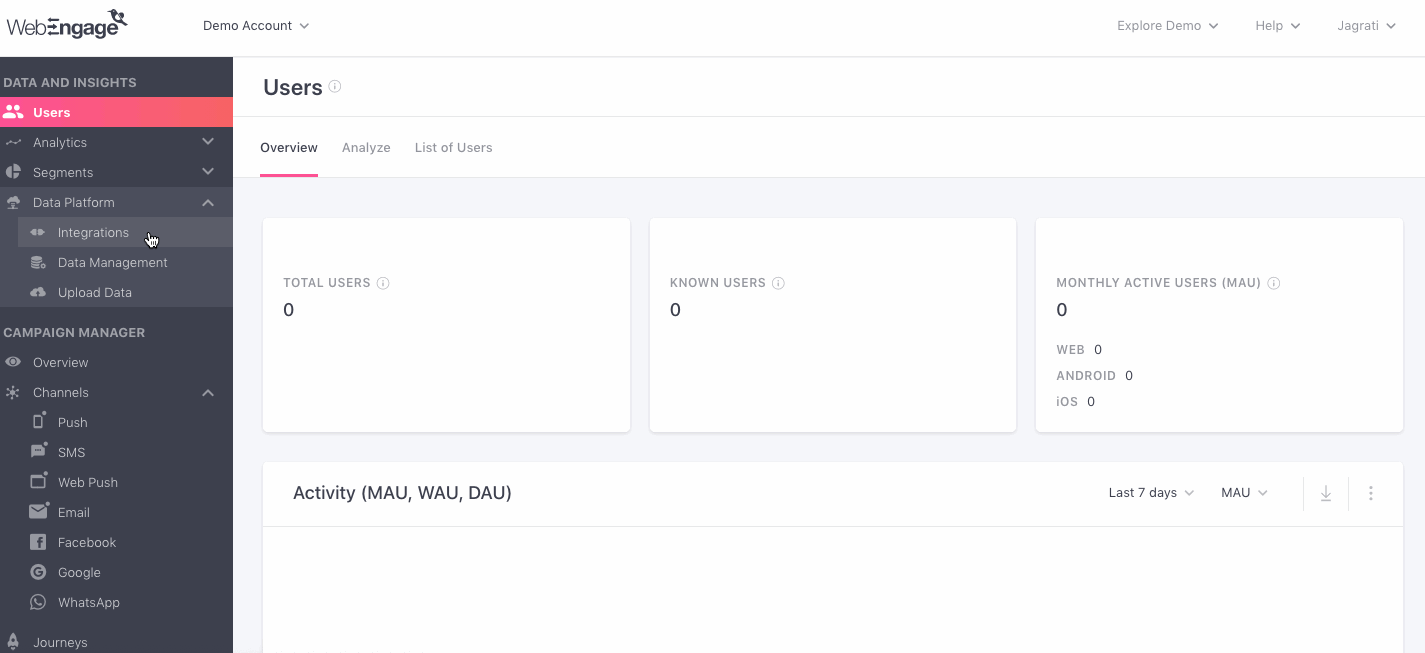Push Messaging
Push notifications are messages that pop up on mobile devices. App publishers can send them at any time; even if the recipients aren’t currently engaging with the app or using their devices.
Before continuing, please ensure that you have added the WebEngage SDK to your app.
Enable Push Messaging
Step 1: Integrate Xamarin.Firebase.Messaging Nuget package with your Xamarin.Android app.
Step 2: Send FCM Registration token to WebEngage from your FirebaseInstanceIdService class as shown below.
using Firebase.Iid;
using Com.Webengage.Sdk.Android;
...
[Service] [IntentFilter(new[] {
"com.google.firebase.INSTANCE_ID_EVENT"
})]
public class YourFirebaseInstanceIdService : FirebaseInstanceIdService
{
public override void OnTokenRefresh()
{
var refreshedToken = FirebaseInstanceId.Instance.Token;
SendRegistrationToServer(refreshedToken);
}
void SendRegistrationToServer(string token)
{
WebEngage.Get().SetRegistrationID(token);
}
}It is recommended to send this token to WebEngage from your Application class as well, as shown below.
using Firebase.Iid;
using Com.Webengage.Sdk.Android;
...
[Application]
public class YourApplication : Application
{
...
public override void OnCreate()
{
base.OnCreate();
...
string token = FirebaseInstanceId.Instance.Token;
WebEngage.Get().SetRegistrationID(token);
}
}Step 3: Send the notification message data to WebEngage from your FirebaseMessagingService class as shown below.
using Com.Webengage.Sdk.Android;
...
[Service]
[IntentFilter(new[] {
"com.google.firebase.MESSAGING_EVENT"
})]
public class YourFirebaseMessagingService : FirebaseMessagingService
{
public override void OnMessageReceived(RemoteMessage message)
{
base.OnMessageReceived(message);
IDictionary<string, string> data = message.Data;
if (data.ContainsKey("source") && "webengage".Equals(data["source"])) {
WebEngage.Get().Receive(data);
}
}
}Step 4: Log in to your WebEngage dashboard and navigate to **Data Paltform> Integrations> Push Setup (Configure).
- Under the Android section, enter your application package name under the field labeled “Package Name”.
- Paste your FCM/GCM server key under the field labeled “GCM/FCM Server Key” and click Save.

Click to enlarge
And you're good to go!
Please feel free to drop in a few lines at [email protected] in case you have any further queries. We're always just an email away.
Updated about 1 month ago